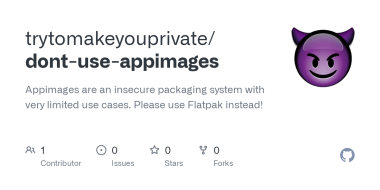Don't use Appimages (a writeup about all the reasons they are a pain for users)
Appimages totally suck, because many developers think they were a real packaging format and support them exclusively.
Their use case is tiny, and in 99% of cases Flatpak is just better.
I could not find a single post or article about all the problems they have, so I wrote this.
This is not about shaming open source contributors. But Appimages are obviously broken, pretty badly maintained, while organizations/companies like Balena, Nextcloud etc. don’t seem to get that.










Add comment